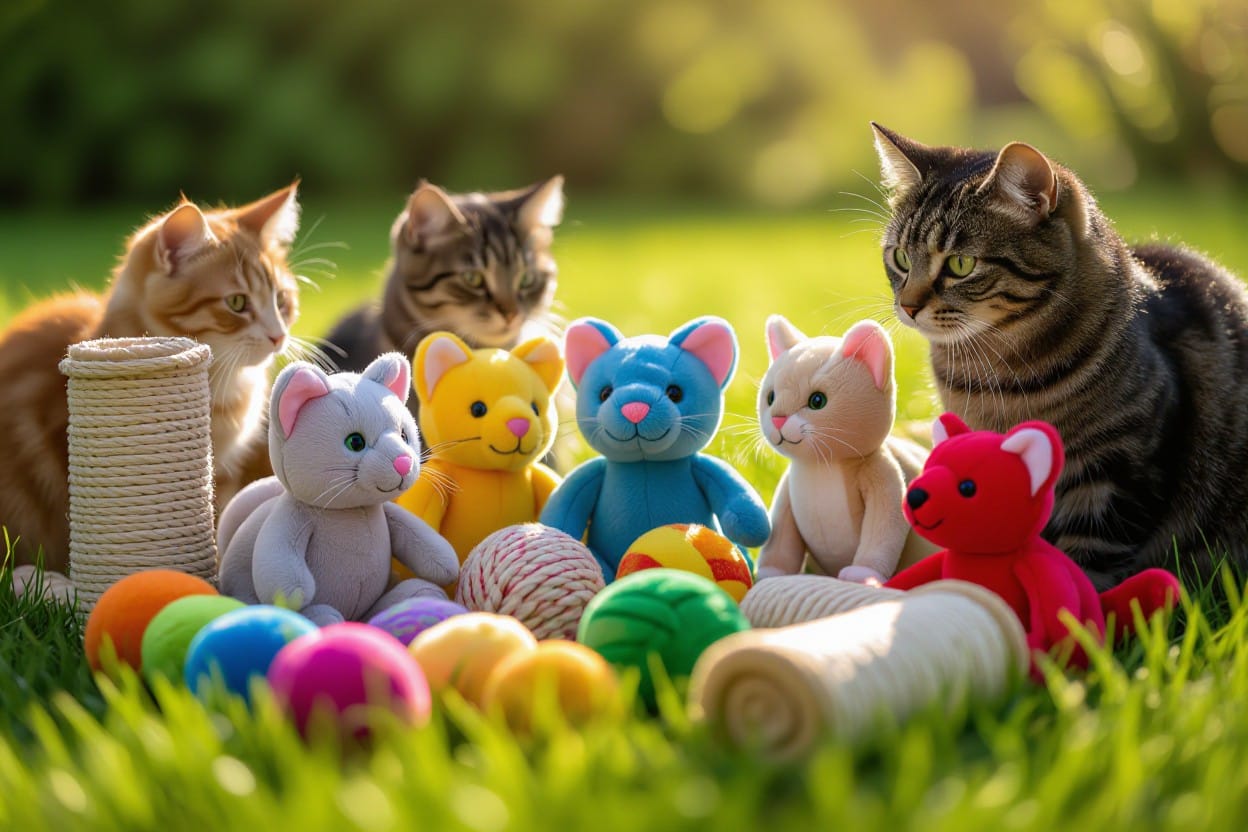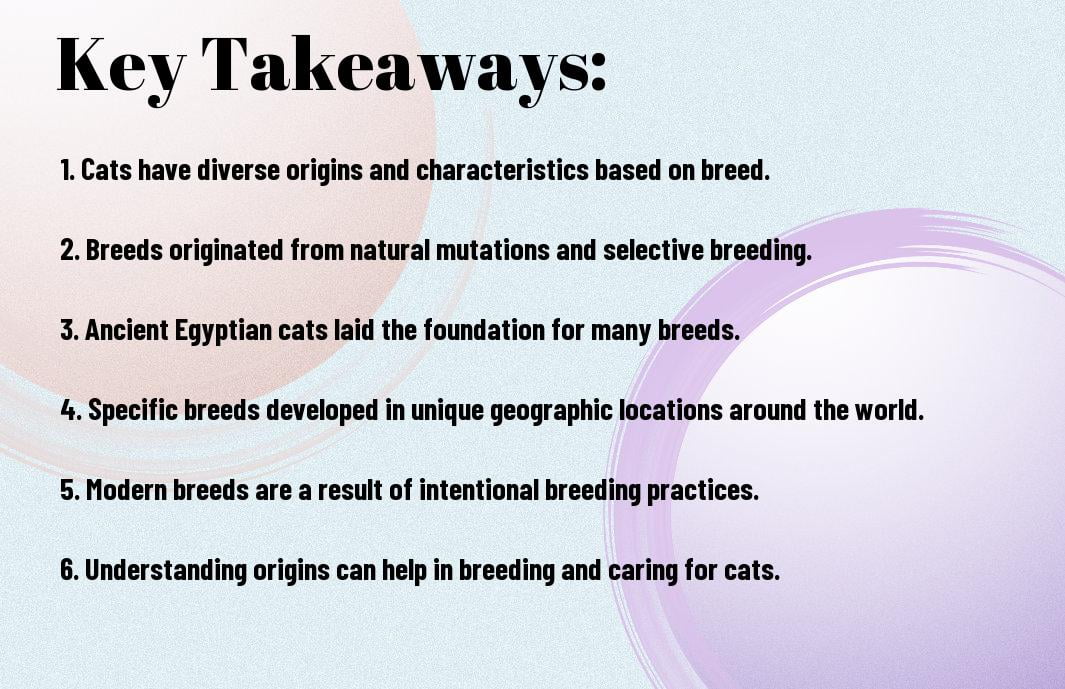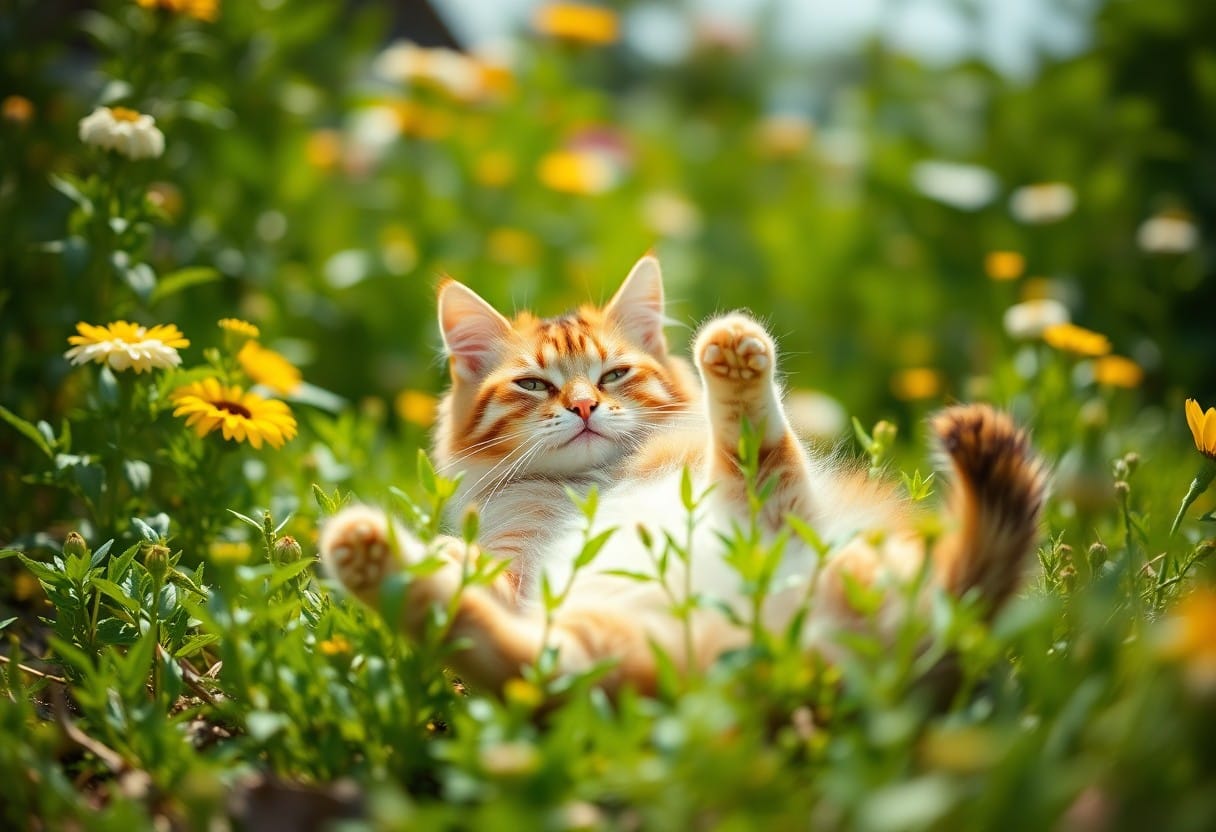Just what is it about catnip that drives our feline friends wild? Catnip, scientifically known as Nepeta cataria, contains a compound called nepetalactone that triggers a unique response in cats. When cats come in contact with this compound, whether by sniffing, licking, or even just getting near it, it can lead to a range of behaviors, from playful antics to utter relaxation. This intriguing phenomenon has puzzled cat owners and scientists alike, prompting a closer look into the science behind why cats go crazy for catnip toys.

Understanding Catnip and Its Origins
Botanical Background of Catnip
Background: Catnip, scientifically known as Nepeta cataria, is a perennial herb belonging to the mint family. It is native to Europe, Asia, and Africa, and is characterized by its heart-shaped, green, and slightly toothed leaves. Catnip produces small white or purple flowers that bloom in clusters at the end of its stems.
Geographic Distribution and Cultivation
The geographic distribution of catnip extends beyond its origins in Europe, Asia, and Africa, as it has become naturalized in North America. This herb thrives in well-drained soil and full sun exposure, making it a popular choice for home gardens. Catnip can be easily cultivated from seeds or cuttings, and its ability to attract beneficial insects like bees and butterflies adds to its appeal as a garden plant.
Understanding the geographic distribution and cultivation of catnip provides insight into its versatility and popularity among cat owners worldwide. Its ease of growth and unique characteristics make catnip a fascinating subject for further study in feline behavior and plant science.
The Chemistry of Catnip
There’s a fascinating chemistry behind why cats go crazy for catnip toys. At the heart of this phenomenon is a compound called nepetalactone, which is found in the leaves and stems of the catnip plant (Nepeta cataria). This compound is responsible for eliciting a range of behaviors in cats, from intense euphoria to relaxation.
The Active Compound: Nepetalactone
Active in very small quantities, nepetalactone is a volatile compound that easily binds to the olfactory receptors in a cat’s nasal tissue, triggering a series of neurological responses. These responses can vary from cat to cat, but typically include behaviors such as rolling, rubbing, leaping, and overall excitement. Interestingly, not all cats are affected by nepetalactone, as the sensitivity to this compound is genetically determined.
Chemical Properties and Synthesis
The chemical structure of nepetalactone is what gives catnip its unique effects on felines. This compound is a cyclical terpenoid, which means it belongs to a class of organic compounds known for their distinct fragrances and biological activities. Nepetalactone’s structure allows it to interact with the cat’s olfactory system, triggering the release of certain neurotransmitters that influence behavior.
The synthesis of nepetalactone involves extracting the crucial oils from catnip plant parts and isolating the compound through various methods such as steam distillation or solvent extraction. Once isolated, nepetalactone can be incorporated into cat toys or sprays to provide that irresistible allure that cats find so captivating. Catnip-infused products continue to be a favorite among cat owners looking to entertain and enrich their feline companions.
Biological Mechanisms of Catnip’s Effect on Cats
The Feline Olfactory System
To understand why cats are so irresistibly drawn to catnip toys, we must first explore into the intricate workings of the feline olfactory system. Cats possess a highly developed sense of smell, with a specialized organ called the vomeronasal organ, also known as Jacobson’s organ. This organ is located in the nasal cavity and is responsible for detecting pheromones and other scent molecules in the environment.
Interaction between Nepetalactone and Feline Olfactory Receptors
With their sensitive olfactory system, cats are particularly responsive to a compound called nepetalactone found in catnip. When a cat comes into contact with nepetalactone, it binds to receptors in the olfactory sensory neurons, triggering a cascade of neural signals to the brain. This interaction leads to a series of behaviors, ranging from sniffing and rubbing to rolling and purring, that we commonly associate with a catnip-induced euphoria.
For instance, nepetalactone mimics certain pheromones that cats find attractive, hence the reason for their peculiar reactions when exposed to catnip. The response can vary between individual cats, with some showing heightened playfulness and others becoming more mellow and relaxed. This diversity in reactions highlights the intricate interplay between nepetalactone and the feline olfactory receptors, driving the captivating effects of catnip on our feline companions.

Behavioral Responses to Catnip
Common Behaviors Exhibited by Cats
Many cats exhibit a range of distinctive behaviors when exposed to catnip. These behaviors are largely believed to be an inherited trait, as some cats may not respond to catnip at all. Any of the following behaviors may be observed in cats that are sensitive to the effects of catnip:
1. Rolling and rubbing: Cats often roll around on catnip-infused toys or rugs and rub their faces on them. This behavior is a way for them to spread the scent of the catnip over their fur, which may intensify the effect of the nepetalactone compound found in catnip.
Variability in Responses Among Different Cats
Many cats exhibit a range of distinctive behaviors when exposed to catnip. These behaviors are largely believed to be an inherited trait, as some cats may not respond to catnip at all. Any of the following behaviors may be observed in cats that are sensitive to the effects of catnip:
1. Rolling and rubbing: Cats often roll around on catnip-infused toys or rugs and rub their faces on them. This behavior is a way for them to spread the scent of the catnip over their fur, which may intensify the effect of the nepetalactone compound found in catnip.
Catnip’s effects can also vary among individual cats. While some cats may become hyperactive and excited when exposed to catnip, others may become more relaxed and sedated. This variability in responses is not yet fully understood, but it adds to the intrigue and mystery surrounding the effects of catnip on our feline friends.
Another
One interesting aspect of catnip’s effects on cats is the fact that kittens and older cats tend to be less responsive to the herb. This may be due to the underdeveloped or waning sensitivity to nepetalactone in their olfactory receptors. Additionally, not all cats possess the gene that makes them sensitive to catnip, which could explain why some cats show no interest in catnip toys or treats at all.
Health and Safety Considerations
Potential Health Benefits of Catnip for Cats
Once again, catnip, scientifically known as Nepeta cataria, can offer some health benefits to your feline companions. When cats interact with catnip, they typically exhibit behaviors such as rolling, rubbing, and playful antics. These activities can provide mental stimulation and environmental enrichment for your cat, promoting overall well-being and reducing stress.
Safety and Risks Associated with Catnip Toys
Cats are typically drawn to catnip toys due to the chemical compound nepetalactone found in catnip, which triggers a response in their brains. While catnip is considered safe for most cats and is not addictive or harmful, it’s necessary to monitor your cat’s interaction with catnip toys. Some cats may become overly stimulated or aggressive when exposed to catnip, so it’s crucial to observe their behavior and intervene if necessary.
Associated with the use of catnip toys is the risk of allergic reactions in some cats. If your cat shows signs of allergies such as sneezing, itching, or skin irritation when exposed to catnip, it’s advisable to limit their access to catnip toys to prevent any adverse reactions.
Designing and Choosing the Right Catnip Toys
All feline enthusiasts know the joy that catnip can bring to their furry friends. Catnip toys are a popular choice for cat owners looking to provide their pets with a fun and stimulating experience. When considering selecting the right catnip toy for your cat, there are various factors and options to consider.
Types of Catnip Toys Available
- Plush Catnip Toys
- Interactive Catnip Toys
- Refillable Catnip Toys
- Catnip-infused Scratching Posts
Knowing the different types of catnip toys available can help you choose the best option for your cat’s personality and play preferences.
| Toys | Descriptions |
| Plush Catnip Toys | Soft and cuddly toys filled with catnip for gentle play. |
| Interactive Catnip Toys | Toys that encourage play and engagement, often with hidden catnip compartments. |
| Refillable Catnip Toys | Toys that allow you to replenish the catnip for prolonged excitement. |
| Catnip-infused Scratching Posts | Toys that combine scratching surfaces with catnip to entice your cat. |
Factors to Consider When Selecting Catnip Toys for Your Cat
- Size and Weight of the Toy
- Material and Durability
- Level of Activity and Playfulness of Your Cat
- Cat’s Preferences for Texture and Shape
The factors mentioned above play a crucial role in determining the effectiveness and enjoyment your cat will derive from the catnip toy you choose.
Your feline companion’s personality and habits should guide your selection process. The right catnip toy can provide mental stimulation, encourage exercise, and offer a source of comfort for your cat. Consider the size, texture, and durability of the toy to match your cat’s preferences and play style.
- Choose a toy that matches your cat’s energy level and play preferences.
Catnip
Catnip is a natural herb that belongs to the mint family and contains a compound called nepetalactone. This compound is known to induce a euphoric response in cats, making catnip toys highly appealing to our feline friends. When dicking out catnip toys, opt for ones made with high-quality catnip to ensure maximum potency and enjoyment for your cat.

Alternative Plants and Their Effects on Cats
Plants with Similar Effects as Catnip
Your feline friend may not respond to catnip, but there are other plants that can evoke similar reactions. An herb called silver vine, also known as matatabi, has been found to elicit euphoric responses in cats. The active compound in silver vine, actinidine, works on cat sensory neurons and triggers a pleasurable response that can result in rolling, rubbing, and overall heightened playfulness.
Plants to Avoid Around Cats
Effects of certain plants on cats can range from mild irritation to severe toxicity, so it’s crucial to be cautious about what greens you have in your home. Some plants that are typically safe for humans can be toxic to cats, like lilies, aloe vera, and ivy. Symptoms of plant toxicity in cats can include vomiting, diarrhea, lethargy, and even organ failure. It is crucial to be aware of the plants that are harmful to cats to prevent any potential health risks.
Summing up
Ultimately, the science behind why cats love catnip toys can be attributed to the compound nepetalactone found in the herb Nepeta cataria. This compound, when inhaled or ingested by cats, binds to certain receptors in their brains, leading to a range of behaviors from excitement to relaxation.
Understanding the neurological effects of catnip on cats can help pet owners provide enriching experiences for their feline friends. By incorporating catnip toys into their environment, owners can promote play, mental stimulation, and overall well-being for their furry companions.
FAQ
Q: What is catnip and why do cats love it?
A: Catnip is a herb from the mint family that contains a compound called nepetalactone. When cats smell or ingest catnip, nepetalactone binds to receptors in their nasal tissue, which then stimulates sensory neurons in their brain, resulting in a euphoric response that we see as cats being playful and happy.
Q: Is it safe for cats to consume catnip?
A: Yes, catnip is non-toxic to cats and is safe for them to consume. However, too much catnip can cause temporary behavioral changes such as agitation or aggression, so it’s best to limit their exposure to it.
Q: How long does the effect of catnip last on cats?
A: The effects of catnip typically last for 5 to 15 minutes. After that, cats may become unresponsive to catnip for a period of time, usually about 1 to 2 hours, before they can enjoy it again.
Q: Can all cats enjoy catnip, or is it only certain cats that are affected by it?
A: Not all cats are affected by catnip. The sensitivity to catnip is hereditary, with about 50-70% of cats having a genetic predisposition to respond to it. Kittens and older cats are less likely to be affected by catnip compared to adult cats.
Q: Are there any health benefits to giving catnip to cats?
A: While catnip does not provide any significant health benefits, it can be a useful tool for cat owners to encourage play and mental stimulation in their cats. The act of playing with catnip toys can help reduce stress and anxiety in cats, providing them with mental and physical exercise.
















